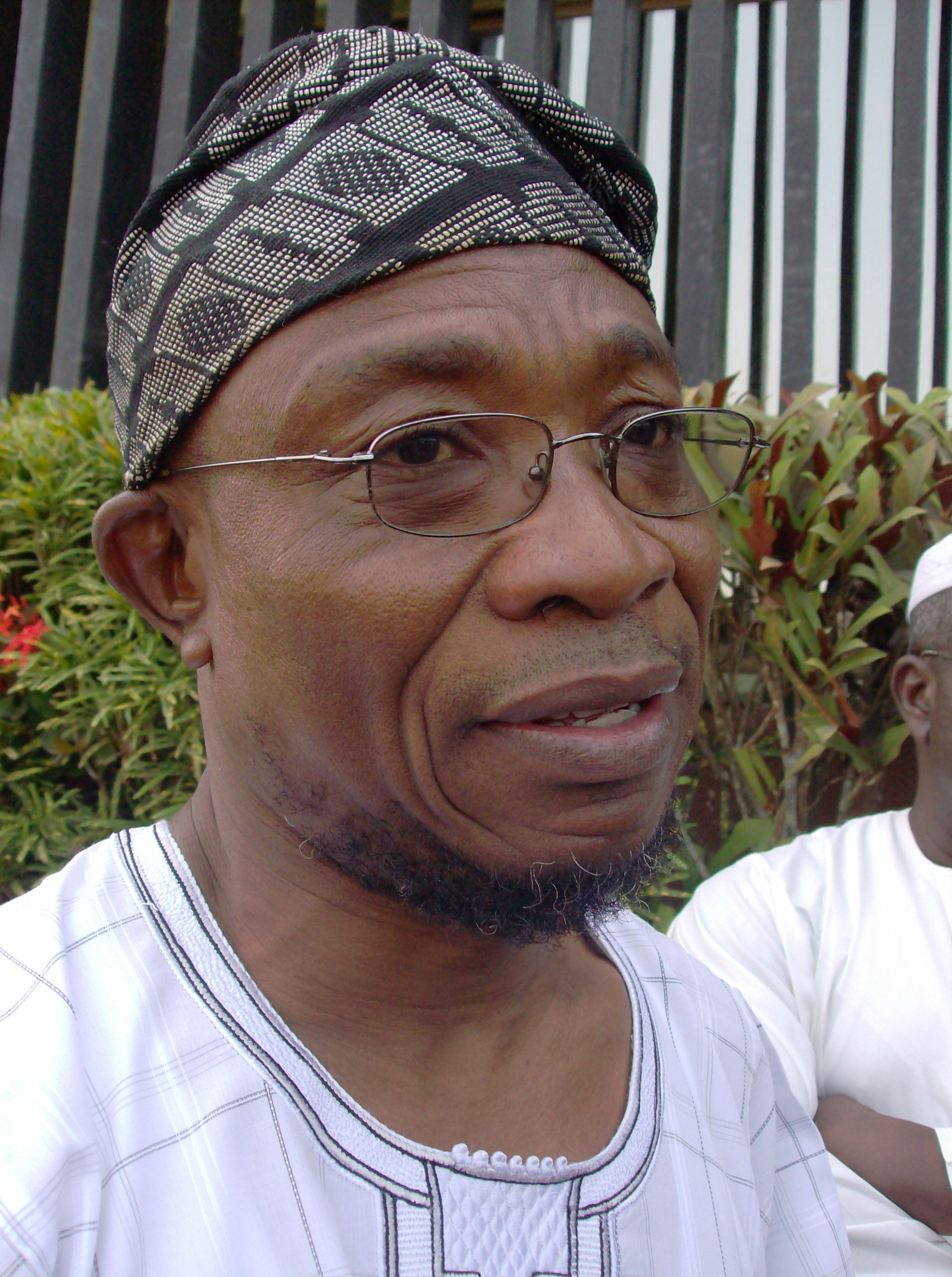The truth about surgery without blood transfusion


The truth about surgery without blood transfusion
“Doctor, can you play some music?” the patient requested. “I’m nervous. I need music to calm me down.”
“What music do you like?” the doctor said, reaching out for his iPad. “Can you play me Celine Dion?” she asked.
As Dion’s mellifluous voice wafted through the air, serenading the expectant nervous mother so did silence fall on the theatre except for some intermittent muffling of instructions by Dr. Tunde Igbokwe (not real name) to his assistant and the theatre nurse.
Our correspondent had arrived at the three-storey hospital, located in one of Lagos’ busiest and densely populated area at 6.00am, two hours ahead of the appointment time. It took another two hours before the first operation, a caesarean section, kicked off.
The young mother-to-be, with a protruding stomach, lay on one of the beds in an enclosed spick and span wide space, located directly opposite the theatre on the last floor. She was roused up and gently led into the theatre by a nurse.
She was then aided to climb unto the operating table and asked to sit on a black rubber-like object. A tray with an array of surgical tools – scalpels, forceps, and retractors – was on a detachable platform on the table.
“She has opted for an elective caesarean section that would require no blood transfusion,” Dr. Igbokwe said as he made the patient bend with her chin touching a pillow placed between her raised knees and face in preparation for anaesthesia.
Commonly referred to as bloodless surgery, the Centre for Bloodless Medicine and Surgery, Johns Hopkins, United States, describes it as any surgical procedure that is performed without a foreign blood transfusion.
In Africa and other parts of the world, bloodless surgery is synonymous with Jehovah’s Witnesses. They are known for their refusal to accept blood transfusions as part of medical treatment – primarily on religious grounds.
With the patient’s arms secured and placed on extendable parts of the table, Igbokwe, who is a family physician and an anaesthetist, then gave the patient epidural and spinal anaesthesia.
The pregnant woman groaned as the injections were given. It was a regional anaesthesia.
“I gave her both epidural and spinal anaesthesia to reduce any possible pain she may feel after surgery. Epidural anaesthesia usually does not last long; and often times, the anaesthetist is not always there till the end of a surgery,” he said in response toSUNDAY PUNCH’s inquiry.
During the bloodless mastectomy
The patient was about to have her second child; she was delivered of her first baby also through a C-section.
Dressed in theatre gowns, face masks and caps on, Igbokwe along with his assistant and a nurse were ready to deliver the woman of her baby. There was some cleaning of her abdominal region.
Igbokwe explained that a C-section is a major surgery that can lead to loss of more blood by a woman than in vaginal birth.
Bloodless surgery
The doctor picked up a surgical knife and made a straight incision in the abdominal area (horizontally across the lower end of the uterus, called a low transverse incision, which aids reduced blood loss and a decreased chance of rupture).
He began to cut open layers of the abdominal skin, the muscle, fascia, peritoneum, uterus and eventually the amniotic sac. As the cutting went on, the doctor would momentarily use a tool connected to electricity to cauterise the patient’s blood vessels.
He called it “cut and burn”; a process meant to ensure that little or no blood is lost during surgery.
A further incision was made in the uterus with a horizontal cut to rupture the amniotic sac (a bag of fluid inside a woman’s womb where the unborn baby develops and grows).
As the cut was made, some fluid spewed out. With the sac opened, the baby was removed from the womb. The umbilical cord was cut and the placenta was removed.
The sober faces of the medical team lit up as one of them brought out the baby. The baby was quickly taken away by the nurse into an adjacent room in the theatre to be cleaned up.
“Where’s my baby? Why is it not crying?” the new mum asked. In answer, the newborn’s innocent cry reached its mother.
Then the process of stitching up the womb began. It seemed more complicated and took a longer time than opening up the uterus; as the doctor dexterously used a scissors-like instrument to pick up a small, curved silver piece of metal to stitch up the opening, layer after layer.
Igbokwe has lost count of the number of bloodless surgical procedures he has conducted.
“Did you see any blood on the floor?” he asked our correspondent as he completed the stitching. There was none.
“Like in all surgeries of this kind, the focus is always on minimising the loss of blood. Nobody wants to be exposed to blood. If all patients know that a surgical procedure can be done without the risks associated with blood transfusion, they will opt for bloodless surgery,” he said.
Describing the precautions he took since there was no blood transfusion involved, Igbokwe explained, “We ensured that before she underwent the C-section, her blood level was at optimum level – 10ml and above is standard for a lot of people. Another thing worth mentioning is that in bloodless medicine and surgery, there is what we call permissible anaemia. You can treat a patient even if his blood count is 20. We can over time build up his blood level before surgery (if there is time to do so).
“In some cases, if the patient’s blood count is 48 before surgery, it can drop to 20; that means the patient has lost a lot of blood during surgery. When at 20, there are ways to build up the patient’s blood count. It can be through intravenous iron, erythropoietin (hormone stimulating production and maintenance of red blood cells), among other means.”
In about an hour, the new mum was back in her bed with the newborn placed in a cot beside her.
Her preoperative blood level was 39 per cent while her post-operative blood count was 35 per cent, our correspondent gathered.
Second bloodless surgery
Just after the caesarean section, another patient was wheeled in for a bilateral mastectomy.
Before the second surgery, Igbokwe explained that the bilateral mastectomy (surgery to remove all breast tissue from both breasts as a way to treat or prevent cancer) comes with a higher risk of complication than a unilateral mastectomy.
“The second patient has cancer. She has had a lump removed from one of her breasts which after investigations was said to be benign. But afterwards, she was diagnosed with cancer in one of her breasts. She had undergone chemotherapy (treatment of disease by the use of chemical substances, especially the treatment of cancer). Unfortunately for her, there are lumps in the other breast. Her dilemma is: whether she should investigate whether the lumps are malignant – cancerous – or not.
“What if the investigations say the lump is benign, then she later develops cancer also in the other breast? That is her worry. Initially, she had agreed that the first breast with cancer should be removed. But right now, she and her husband have agreed that both breasts should be removed. So, we are looking at a bilateral mastectomy. This is a complicated surgery, especially with someone who had undergone chemotherapy,” the doctor said.
The woman undergoing the mastectomy was already in the theatre when our correspondent was invited in.
“She is under general anaesthesia. Her blood count is 35 per cent. The general anaesthesia was augmented with tumescent anaesthesia. Tumescence means deadening the area you want to operate on so that blood loss will be reduced because of suture,” Igbokwe pointed out as he began to remove the first breast.
Unlike regional anaesthesia, where a patient can be aware of what is going on, general anaesthesia puts a patient to sleep.
After putting the patient under anaesthesia, the doctor began to make an incision around her breast. With care and precision, he removed the breast tissue and other parts of the breast were removed.
The tissue beneath the skin down to the chest wall and around the borders of the chest was also removed.
During the operation, a process called diathermy (a surgical procedure involving the production of heat in the removed breasts by high-frequency electric currents, to cauterise blood vessels so as to prevent excessive bleeding) was used.
According to the doctor, other techniques used in bloodless surgery have to do with carefully cutting through tissues to avoid blood loss and optimisation of haemoglobin to ensure that general blood count is sufficient to carry out an operation.
“The second step is meticulous haemostasis. During the operation itself, there is what is called haemodilution; one has to put a lot of liquid into the body system to dilute the blood of the patient. Sometimes, we can deliberately create a low blood pressure in the patient.
“We can actually block the blood flow temporarily while we are picking out tumours in a patient’s system. A patient can survive without blood flow for more than nine days. So, we take advantage of that. Once we are done, we stitch up everywhere we have opened and then release the blood vessels,” he added.
Blood transfusion and baby Eniola
In November 2005, concerns over the safety of blood transfusion in Nigeria were brought to the fore when a baby, Oyinkosola Eniola, was infected with the Human Immunodeficiency Virus at one of the country’s leading tertiary hospitals, Lagos University Teaching Hospital.
Following baby Eniola’s birth, she was discovered to be jaundiced. With blood transfusion prescribed, her father donated some units of blood. But his blood was found to be incompatible to that of his baby. Because of that, blood from the hospital’s blood bank was administered on her. Before long, the baby tested positive for HIV, though her parents tested negative.
Struck by disbelief and confusion, the hospital claimed that the blood transfused into baby Eniola was screened and found to be HIV-negative at the time it was transfused into the newborn.
To unravel the seeming mystery, the Federal Government conducted an investigation and concluded that the likely source of the infection was the transfused blood.
Virologists noted then that at the time of donating the blood (that was transfused into the baby), the donor was at the window period of HIV infection.
Describing the HIV window period, the United States Centres for Disease Control and Prevention stated that it can take some time for the immune system to produce enough antibodies for the antibody test to detect and this time period can vary from person to person.
Similarly, in January 2016, the Lagos State House of Assembly ordered the closure of the blood bank section of Gbagada General Hospital, Lagos, after discovering some unethical practices at the hospital. It was discovered that screened and unscreened blood were kept in the same place without proper marking and differentiation.
Medical experts however told this reporter that despite being fraught with risks, transfusing blood saves lives in critical situations.
One of them, an oncologist at the Lagos University Teaching Hospital, Prof. Remi Ajekigbe, said, “No one’s saying blood transfusion is absolutely safe. Before blood can be transfused, it has to go through grouping and cross-matching and a patient can still react (adversely to it). But, I will say blood transfusion is safe and good when in competent hands.”
Bloodless surgery for sickle-cell patients
There have been countless debates regarding the possibility of carrying out a bloodless surgery on a patient with sickle-cell anaemia.
According to an estimate by the World Health Organisation’s, sickle-cell disease affects about 350 million people globally and they require frequent blood transfusions throughout their lives.
“Nobody really wants to use blood for any reason. But when there’s clear indication of a patient’s life being at stake, you have to use it. True, there are immunological and non-immunological complications in use of blood.
“But there’s no way you can do a surgery for a patient who has sickle-cell anaemia without use of blood transfusion,” a Professor of Haematology and Transfusion Medicine, College of Medicine, Unilag and Consultant Haematologist at LUTH, Sulaiman Akanmu, asserted.
Disagreeing, the Medical Director of National Orthopaedic Hospital, Enugu, Dr. Cajetan Nwadinigwe, said it’s possible to carry out bloodless surgery on a sickle cell patient, noting that all that is required is precision.
He shared an experience of a bloodless arthroplasty successfully performed on a patient with sickle-cell disease.
“A 28-year-old female patient with sickle-cell disease, who had a three-year history of pain in the right hip, which had been progressively worsening with noticeable shortening within a year, had to undergo surgery. Examination showed that she was underweight with body mass index of 17.9kg/m2, and an anthalgic gait (which occurs when a patient attempts to avoid putting weight on one leg due to pain).
“She had a tender right hip with hip flexion (a bending movement around a joint in a limb) of 50 degrees, abduction and adduction of 10 degrees with zero internal rotation, external rotation and extension due to pain. Her Harris hip score (a clinician-based outcome tool that is frequently used for the evaluation of patients following a total hip replacement) was 53 and she had a limb length discrepancy of 2 cm, while her haemoglobin was 10g/dl,” Nwadinigwe disclosed.
According to the NOH boss, the young lady was put on erythropoietin injections, 4,000 units, three times a week prior to surgery and blood conservation technique by way of acute hypervolemic haemodilution in theatre was used with general anaesthesia in order to achieve what he called “a close control of desired blood pressure using hypotensive anaesthesia.”
He said the surgery lasted for four hours and 32 minutes with an estimated blood loss of 1200 mls.
“She has had three months of follow-up and did well with a Harris hip score of 89 at six weeks,” Nwadinigwe added.
Emergency bloodless surgery
In a recent survey of surgeons and anaesthesiologists in West Africa (mostly Nigerians), 21.7 per cent did not operate on or anaesthetise patients who had refused blood transfusions.
On the African continent, bloodless surgery is said to be uncommon in medical emergencies and not a few medical practitioners view the non-acceptance of blood transfusion during such situations as suicidal.
Ajekigbe; Akanmu; the Chief Medical Director of Medical Art Centre, Prof. Oladapo Ashiru; and the National Coordinator of the National Blood Transfusion Service, Dr. Oluwatoyin Smith, stated that performing surgery without administering blood transfusions in an emergency is an invitation to fatality.
They pointed out that blood transfusion is inevitable in an emergency case (such as a fatal auto crash) to replace excessive blood loss or to prevent complications that may arise due to inadequate supply or lack of blood.
But a family physician and a surgical intensivist, Dr. Innocent Okoawo, the Medical Director of Safehands Medical Centre, Lagos, disagreed.
Okoawo, who had recently performed a bloodless nephrectomy (removal of a cancerous kidney), said, “Bloodless surgery is possible in an emergency. What makes it an emergency? It may be that someone has an accident and we need to quickly go there and attend to the person. In any situation, you don’t look for an ideal condition.
“Maybe a woman is pregnant and she has ruptured; she has internal bleeding. First thing to do is to stop the bleeding. In essence, medical emergencies create opportunities for bloodless surgery. Without blood transfusion, patients can undergo surgeries.”
Our bloodless surgery experience – Patients
In SUNDAY PUNCH’s search for a hospital that would grant its request to witness a bloodless surgery and also talk to patients that had undergone the procedure, our correspondent met Mrs. Mercy Akinkugbe.
She stated that a doctor who had agreed to deliver her of her baby through caesarean section without blood transfusion suddenly changed his mind.
“I had begun to go into labour that day; it was about noon. He tried to persuade me to take blood but I insisted on bloodless surgery. To my amazement, he washed his hands of my case. It was the medical director who carried out the surgery at the end of the day.
“Perhaps, the first doctor developed cold feet at the thought that I have sickle-cell disease. My blood level before the C-section was 19 per cent and 14 after the surgery. At the end of the day, I was safe and my baby was safe too. I have continued to use that same hospital and the doctor who insisted that I should take blood transfusion could not look me in the face for some time,” she said.
At the University of Calabar Teaching Hospital, our correspondent met Uduak Nyoyoh, who was hit by a car which veered off the main road.
Since January 2014, when it began to run its bloodless medicine and surgery unit, the UCTH claims it has not recorded a single fatality in the dozens of operations performed.
“University of Calabar boasts (of) the highest concentration of surgeons, anaesthesiologists, haematologists and other medical and allied specialists who are highly skilled in techniques of avoiding blood transfusion with nearly 100 per cent success in Africa,” it said in a statement on its website.
While Nyoyoh suffered severe hip fracture, a little girl that was also hit by the vehicle was crushed to death.
“Eventually, I was taken to UCTH where I learnt I could be operated on without blood transfusion. The private hospital I was initially taken to passed a death sentence on me, that I would not survive any surgery without blood transfusion,” Nyoyoh said as she reclined on her hospital bed, her bandaged leg suspended in mid-air.
She was admitted into the orthopaedic section, where she underwent an open reduction internal fixation (a surgical procedure to fix a severe bone fracture or surgical repair of a joint, such as a hip or knee replacement) because she needed surgery to realign the bone fracture into the normal position.
Speaking on the surgery, Dr. Onyebuchi Osakwe, who heads the medical team, said, “The preoperative team wrote a consultation note to the Bloodless Surgery Unit. The unit evaluated her, made some adjustments in her medication to avoid intraoperative blood loss, and used intravenous iron and erythropoietin to raise or optimise her blood count. Intraoperative strategies were planned and executed with the anaesthesiologist.
“We gave her medication to minimise blood loss (tranexamic acid and vitamin K). Electrocautery was employed. Crystalloid (a solution of sodium chloride at 0.9 per cent concentration, which is close to the concentration in the blood) and colloid (a homogeneous non-crystalline substance) infusions were used to replace blood loss, which was minimal. During the postoperative, the patient was given oral haematinics and (she) made an uneventful recovery. She was discharged on the eighth day postop.”
Blood vs bloodless
“I am not sure anyone will gladly accept a blood transfusion if he gets to know what it involves. Scientifically speaking, using blood transfusion is bad medicine. People think they do not have alternatives to blood transfusion. There is what is called plasma expander (agent that boosts plasma volume and used to treat patients who have suffered haemorrhage or shock); erythropoietin. What kills people is not anaemia in cases of acute malaria or typhoid, but circulatory collapse. Blood expires after 35 days. You cannot keep blood forever,” Okoawo explained.
A Spanish anaesthesiologist, Lara Oller, at a bloodless scientific conference in UCTH, had said the older the blood, the more likelihood of transfused patients dying.
Similarly, the Head, Bloodless Surgery Unit of the institution, Dr. Nathaniel Usoro, said medical scientists had yet to prove the efficacy of blood transfusion.
“Blood transfusion leads to delayed recovery evidenced by longer hospital stay, delayed wound healing, wound infection, etc. When complications of blood transfusion occur, recovery is further delayed. Bloodless care leads to quick recovery, certainly far better than transfused patients of the same category of illness in virtually all studies done,” Usoro said.
The UCTH surgeon pointed out that blood transfusion causes up to 400 per cent hypoxia (reduced oxygen in tissue) rather than improving tissue oxygenation.
“Thus, the more critical the patient’s condition, the more harmful blood transfusion can be,” he said.
A former director at Hospital Services in Lagos State Ministry of Health, who spoke on condition of anonymity, however disagreed.
“A medical doctor should not say blood transfusion is harmful without that statement being qualified. A lot of people rely on the expertise opinion of a medical practitioner. I don’t see anything wrong with blood transfusion as long as the blood is properly screened,” he pointed out.
Corroborating the medical practitioner’s view, another expert, Dr. Olabanji Ajiboye noted that in “cold cases” surgeries can be performed without blood transfusion.
“But in situations whereby there is excessive blood loss due to an accident or a woman in C-section is bleeding for days, there is nothing else to do than to give blood transfusion. Or, how do you handle that? You will lose the patient. People in dire need of blood transfusion cannot be denied of it.
“There is nothing wrong with blood transfusion as long as the blood is properly screened. It is not true in most cases that blood transfusion is dangerous and unhealthy,” Dr. Ajiboye stated.
It was the same verdict a medical doctor of 25 years experience, Dr. Olukayode Adegboyega, gave concerning the value of blood transfusion. Adegboyega said acute blood loss requires blood transfusion. “In cases of acute blood loss, like industrial mishap or automobile accident where a patient has lost so much blood, transfusion will become inevitable. There is no time to waste in that situation. Blood carries oxygen and you do not want to deprive vital organs of that,” he said.
In 2015, the NBTS said it had 17 blood transfusion centres across the country. Private blood banks also exist, apart from those in tertiary and secondary health facilities.
Maintaining those facilities however does not come cheap, said Dr. Smith.
According to her, it cost N2,000 (handling fee) to access one unit of screened blood in Nigeria.
She explained that screening is carried out for four blood-borne infections: HIV 1 and 2, hepatitis B, hepatitis C and syphilis.
To keep blood running at any NBTSC, Smith gave an estimate of what is needed, “When the building and infrastructure are in place, the estimated number of units of blood should be multiplied by about N70,000 per unit for a minimum of 10,000 units per centre. The total number of units of blood per population is put at 10 donors per 1,000 people,” she disclosed.
To purchase screening reagents and other consumables, Smith said it would cost at least N100m per quarter.
The NBTS boss added that a blood collection centre would require N6m to maintain yearly, while a screening centre could cost as much as N15m to remain in business.
“These are operational costs which exclude salaries for staff,” she stated.
Speaking on claims that blood transfusion is more expensive, Prof. Ashiru, said, “When a patient in a surgical procedure is losing blood, the next thing is to give blood (transfusion). As to whether bloodless surgery is more cost-effective than blood transfusion-surgery, for me, what matters is the patient’s life.”
Africa’s first ‘bloodless curriculum’
The UCTH said it is on the verge of making history by developing academic programmes in bloodless medicine and surgery.
It is also planning to incorporate teaching of blood conservation techniques into undergraduate and postgraduate curriculum.
The proposed programme is being supervised by the Provost, College of Medical Sciences, Prof. Maurice Asuquo, and the Dean, Faculty of Medicine, Prof. Victor Ansa.
The Chairman of the institution’s Bloodless Medicine and Surgery Group, Prof. Etim Ekanem, last November stated that work had begun in earnest to develop the curriculum.
“We are going to achieve this with the collaboration of international health institutions that are already making headway in bloodless care. Before the end of 2017, the group would have come up with a curriculum. We are on the verge of history and we are determined to give the best medical care to our patients that bloodless medicine and surgery stands for,” Ekanem said.
Though Okoawo agreed it is time bloodless surgery was introduced into Nigeria’s medical school curriculum, he does not think achieving that will be easy.
“It is going to be very difficult largely due to the bureaucracy (that will be) involved and the general attitude towards something considered new and revolutionary, in any public institution – in this case, the public health system.
“In tertiary public health institutions, reviews are carried out to compare outcomes of bloodless surgeries and surgeries involving blood transfusions. There are people in the medical world who do not really want bloodless medicine and surgery to become a standard practice in the country,” he said.
Source – Punch Newspaper





Great post however I was wanting to know if you could write a litte more on this subject? I’d be very grateful if you could elaborate a little bit further. Thanks!
Thanks
I’m now not positive the place you are getting your information, but good topic. I needs to spend some time learning much more or figuring out more. Thanks for wonderful information I used to be searching for this information for my mission.
starting your own business
http://www.dealhint.eu
Thanks
I simply want to say I am all new to blogging and site-building and truly enjoyed you’re web blog. Very likely I’m likely to bookmark your blog . You actually have wonderful article content. Many thanks for revealing your web site.
Many thanks